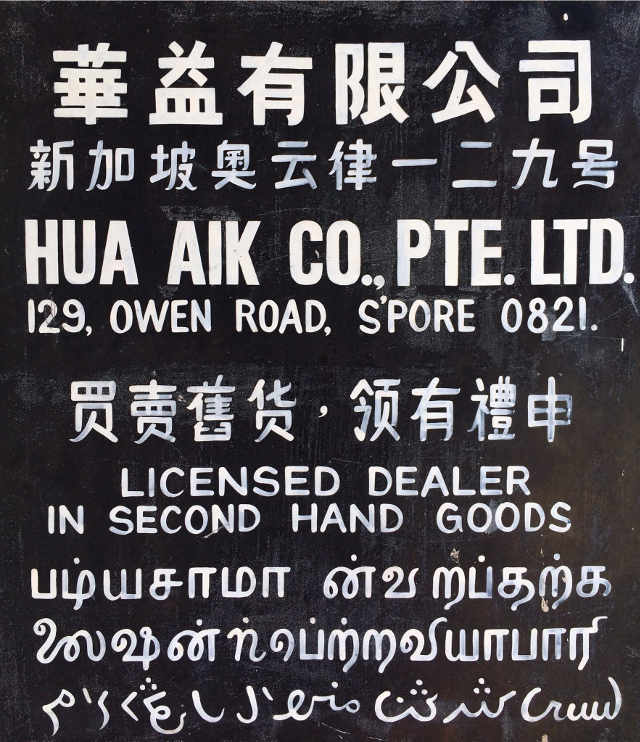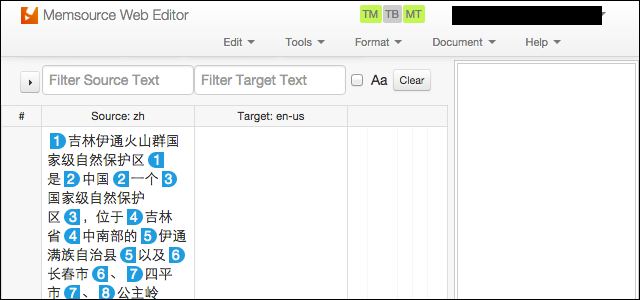“Hey, I think I know someone who speaks Spanish!”
It may seem easier to just have someone in the office or a random freelancer from a job board translate documents for you rather than hiring a language service provider (LSP). However, without considering these five points you may end up regretting that you chose to do it the “easy way.”
There are a few obvious ways to get a translation. You could have personnel in your company do the translation or you could look for a freelance translator. Or, God forbid, you could just run the source text through Google Translate. Or finally, you could hand the job to an LSP.
An LSP is a company that manages translation projects by:
- Receiving an order
- Calculating the cost
- Finding translators
- Managing the translation process
- Ensuring translation quality
- Delivering the translation to the customer
- And finally, paying the translators
But doesn’t that mean an LSP is only a language reseller? Why not just work with people in your own company? Or why not work directly with a freelancer yourself?
Every situation is different, so we cannot offer a one-size-fits-all approach to all translation needs. However, here are five reasons that an LSP might be best for your project.
LSP = A Pool of Dependable Translators
An LSP has a long-term relationship with dependable freelancers. If you want to find freelancers for yourself, you have to wade through thousands of resumes. You must weed out unqualified candidates while, at the same time, trying to avoid fake resumes and scammers. Finding a good freelancer can take hours, hours that you could be spending doing what you do best.
An LSP, on the other hand, has already gone through the process of finding dependable translators. A good LSP will use new translators on small projects and check the work meticulously for problems. It will then give them increasingly larger projects in order to test them and find their strong points. By the time translators work on large projects, they have proven themselves on multiple smaller jobs.
Further, a decent LSP will keep careful records on the strengths and weaknesses of each translator. They will maintain a rating system that gauges translators on accuracy, technical ability, expertise, dependability, speed, and other metrics. In this way, the LSP can have a high level of confidence in the translators that it uses.

Field Experts
What’s more, an LSP is better prepared to deal with contingencies than you are on your own.
Imagine this: You need to have a document about telescope mirrors translated into German by an expert. You find a German translator, who dreams about nothing day and night except telescope mirrors . . . and skiing. In the middle of your project, that translator breaks his or her wrist on the ski slope. Where does that leave your project? Will you be able to find another dependable German translator who knows about telescope mirrors?
An LSP has relationships with multiple translators, who are experts in their fields and who can step in to take a project in case of an accident. So if you hire an LSP, instead of getting just a freelance translator, you are also getting a risk management solution.
No Need to Acquire Specialized Tools
An LSP will have already purchased all of the specialized software necessary for translation project management. Strictly speaking, all that may be necessary for translation is a pencil, paper, and dictionary. However, for large projects and for an effective long-term localization strategy, numerous tools streamline the process and safeguard quality.
One example is a translation project management software, such as Plunet. After you start to work on a few projects and a few translators, you need a robust business management suite to effectively and efficiently deal with contact management, quote generation, invoicing, queries, and reporting. An LSP already has systems to coordinate the complex business of translation.
Another necessary tool is a translation environment called a computer-aided translation (CAT) tool, such as memoQ, or Memsource. These tools lower costs, increase speed and improve accuracy by remembering all previous translations and offering suggestions for current translations.
What’s more, CAT tools have advanced quality assurance functionality to check for common errors. Finally, they make backup easy. Ever lost a Word document that you had worked on for hours when your computer crashed? With a CAT tool, changes made by translators instantly sync with the server sentence by sentence.
LSPs also maintain tools to help their clients communicate with the translators. For example, we have a Localization Project Q&A Tool powered by Smartsheet that we use to keep translators and customers on the same page. When linguists have questions about the source document, they can ask the people who wrote it. This eliminates the need for countless confusing emails. It collects all the questions and answers about the text into one organized resource.
Want a Free Version of Our Localization Project Q&A Tool?
Download your own template of our Localization Project Q&A Spreadsheet.
Quality Assurance
LSPs can offer quality assurance and review.
If you pay an individual translator to do a job for you, how can you know whether it is accurate unless you know the language or can pass the translation on to someone who does?
A good LSP can ensure that you receive high-quality translations. Project managers review all translations before delivery to check for common errors, such as extra spaces, or mismatching numbers.
Further, the text can be sent to a second translator to review for accuracy. This review focuses on potential linguistic errors in the text. After a review by a second translator, you can be confident that your “Ich bin ein Berliner” doesn’t mean “I am a jelly doughnut.”
Improve Consistency
LSPs create and maintain termbases and translation memories. A termbase is basically a list of words in the source language with the appropriate translations of those words in the target language. This is especially useful for names of products and other company-specific words. This tool ensures linguistic accuracy and consistency.
Not only can the termbase tell the translator what words to use, it can also tell the translator what words not to use. For example, languages frequently have two words that have the same meaning–a transliteration from another language as well as a more formal translation. Chinese people frequently use the word kaobei ( 拷贝), which sounds like “copy”, but your company may want to use the more formal word for “copy”: fuzhi (复制).
Whereas termbases keep a list of a few words that you want to be translated a certain way, translation memory records how every sentence has been translated in the past. If a sentence in the current document is identical to a sentence in a document already translated, the previous translation will be automatically inserted. If the sentence is similar, the translator may need to change only a few words. Obviously, translation memory leads to a huge increase not only in speed but also consistency. In the future, any given source sentence in the documentation about a particular project will always be translated the same way.
Save $$$
Where translation memory especially shows its worth is with software documentation. Let’s say that a company releases a new software product and wants to have the documentation translated. When the documentation for version 1.1 is translated, the LSP will create a new translation memory and enter all of the translation pairs into it. When version 1.2 comes out with documentation that is 15 percent different from that of version 1.1. The LSP will then use the translation memory to automatically pre-translate the 85 percent of the documentation that has been translated before. As a result, the software company will pay for only the 15 percent that was different from the previous version.
But it gets better. Let’s say that out of that 15 percent, 10 percent is pretty similar to text that was in version 1.1. The software company will get a discount for that text, so it ends up paying full price for only 5 percent of the documentation of version 1.2. Imagine how much the company saves by the time it reaches version 20.
Clearly, termbases and translation memories are essential for large scale and long term translation. An LSP will maintain these resources for you, leading to more and more savings as the time goes on while at the same time keeping the language consistent.
A Single Point of Contact = Time Savings
Finally, an LSP is your single of point of contact for all of your translation needs. If you hire 10 different translators to translate a message into 10 different languages, imagine how many emails you will have to send and receive. How many people will you have to contact and negotiate with? And how many project milestones will you have to keep track of? How many invoices will you have to process?
If you make use of an LSP, all of that legwork is completed by one person—a project manager—who is accountable to one person—you. The project manager at the LSP will analyze all of the documents, contact all of the translators, set up communication between them and the experts at your company, check up on the progress on all the jobs, perform quality assurance, the list goes on. Those are all things you don’t have to do. You simply say “sick ‘em” to the project manager at the LSP and let him or her do the dirty work.
It is best if engineers stick to engineering rather than emailing translators or if marketing teams stick to marketing instead of searching for freelancers or if developers stick to development rather than examining thousands of words in a foreign language for potential errors. Your company could see significant savings if you hire an LSP instead of doing it the “easy way.”

Japanese Car Show and Model
Contact us for information about your translation project or for a free quote.
Darren Jansen, Business development and content manager for IVANNOVATION has a lifetime love for tech and languages. At IVANNOVATION he helps software developers get professional localization for their apps, software, and websites. On his time away from the office, he can be found hiking the Carolina wilderness or reading Chinese literature.






